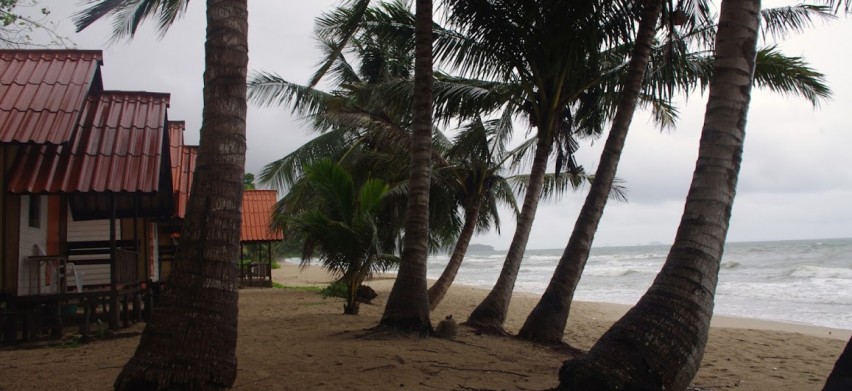In the latest SmartEarth blog post, Stephen Flood discusses the concept of resilience, and unpacks its potential value in in the spheres of disaster preparedness and climate adaptation. This second post in the series concentrates on the ecological resilience of communities.
Brief Recap of Resilience
The ubiquitous term resilience is defined as the ability of a system, community or society to recover, in a timely manner, from a hazard or shock. This agile concept has been embraced by both the disaster risk reduction and climate change adaptation communities. In its most complete sense resilience can neatly integrate individual, community, institutional and environmental concerns. It also has the power to function as a bridging concept that can easily link climate with disaster preparedness, or development with human rights and livelihoods. In the following post we are interested in putting resilience principles to work in the real world, with a focus on the concept of ecological resilience.
Ecological Resilience
Ecological resilience is as defined as the amount of disturbance that an ecosystem can withstand without changing self-organized processes and structures.Use of the concept is on the rise as it begins to rival traditional engineering management approaches. However, if one pours over the planning, development and policy literature it becomes clear that when traditional engineering approaches are deployed they are often packaged in the guise of resilience. The classic example is in the area of coastal protection. If a coastal community is under threat from sea level rise, coastal erosion, storm surges or tsunami the traditional go-to solution is the construction of a sea wall. This hard engineering approach is highly effective in the short run at protecting coastal communities and is often falsely labelled as fostering coastal resilience. It provides those living behind it was a sense of security and protection, and can incentivise further development in high risk coastal locations. However,if the wall is breached it causes substantial damage and destruction. A truly resilient approach would be the use of ecological defences such as mangroves, coral reefs and wetlands in combination with policy approaches such as managed retreat. Ecological approaches have inbuilt flexibility and capacity to absorb shocks. Our case study examples come from the Philippines and Vietnam provides real world applications of the ecologically resilient approach.
Case Study Examples
In the aftermath of typhoon Haiyan (2013) in the Philippines a significant sum of money (approximately 8 million USD) was put aside to protect the impacted coastal communities. However, the money was not raised to put a sea wall or levee in place, but rather to plant some 19 million mangrove trees. These trees, once established, will offer a natural buffer against storms, coastal erosion and flooding.This is one small, but significant, step in the recovery process for communities rebuilding their lives in the aftermath of the disaster. Guardian newspaper reporter Oliver Milman went to visit the impacted areas in the Philippines in March 2015 (1). His report points towards substantial recovery and regeneration. He also indicates some further ongoing steps towards the process of recovery including educating the local population about the dangers of flash floods and storm surges, and building emergency shelters.
Professor Lindsay Stringer, Director of the Sustainability Research Institute at the University of Leeds, in the UK, and her team have carried out research into the benefits of mangroves and their governance in Vietnam in late 2013 (2). They found that people living in proximity to mangroves often use them as a food supply, as fish, clams, worms, octopus, shrimps and jellyfish make their homes amongst them. They either subsist from this food source or use their natural resources as a safety net when other food supplies fail. A series of informal and formal rules and practices are used to manage these mangroves.
Stringer reports that formal institutions and governance structures of many current restoration and replanting projects often reinforce existing power relations and inequalities, and thus fail to consider the importance of community involvement and buy-in that can be the difference between success and failure for ecological rehabilitation initiatives. It is important to set out a clear picture of how the mangroves will be governed and used, as well as who will have the right to use them, before large scale planting efforts take place.
Final Thoughts
In conclusion, ecological resilience principles can provide a powerful approach in enabling effective disaster risk preparedness and climate change adaptation policies and practices. However, we must be careful that they are engaged with sufficiently and not just on a superficial level. Only through careful consideration of the human and environmental impacts of a resilience building project can successful implementation be achieved.
References:
(1) Milman, O. (2015). Life in the Philippines: preparing for the next typhoon Haiyan, The Guardian. Available from: http://www.theguardian.com/environment/2015/mar/25/life-in-the-philippines-preparing-for-the-next-typhoon-haiyan Accessed on June 30th 2015.
(2) Stinger, L. and Orchard, S. (2013). Mangroves, nature’s shield against typhoons and tsunami, The Conversation. Available from: http://theconversation.com/mangroves-natures-shield-against-typhoons-and-tsunami-21051 Accessed on June 30th 2015.



Leave a Reply